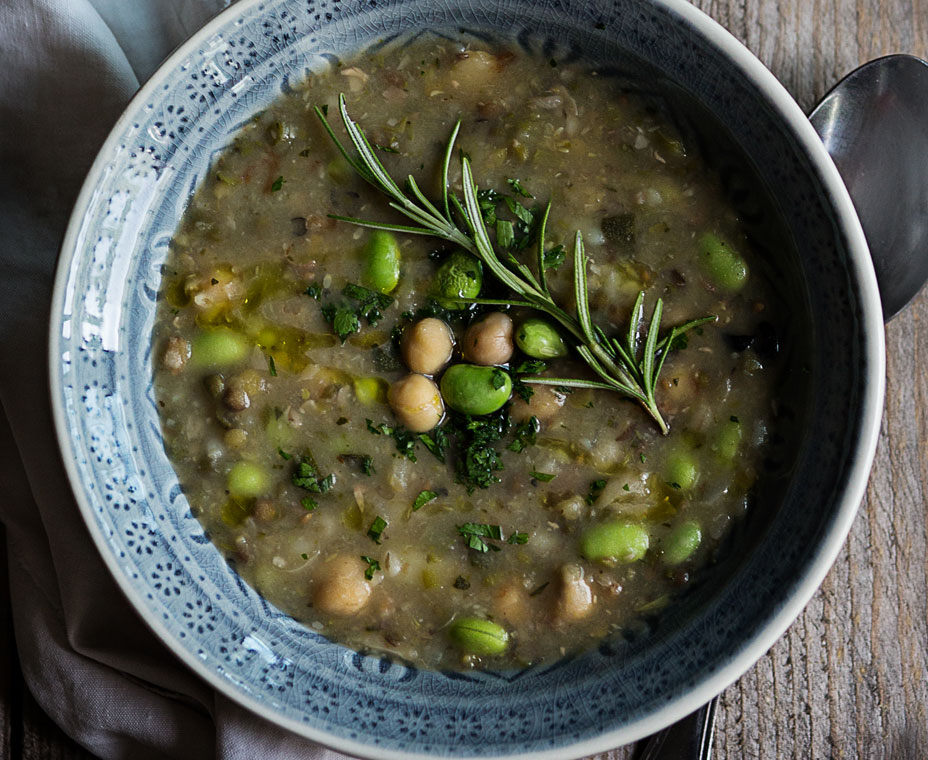Here’s a sign that a menu category is ready for refreshing, if not outright reinvention: In 2007, soup was available on 77 percent of U.S. restaurant menus, according to market research firm Datassential. Ten years on, the figure has fallen to just under 71 percent. Soup is particularly underrepresented on quick-serve menus, with just 47 percent of outlets featuring the stuff.
Still, soup’s fading fortunes on restaurant menus have been less dramatic than its fall from grace in the supermarket. Between 2003 and 2013, canned-soup sales plummeted 13 percent. The Washington Post had one explanation: “All those millennials aren’t hip to glop in cans,” the paper noted in 2013.
And yet Americans still love soup, for all sorts of reasons. Among them:
• It may help with weight loss. According to the journal Appetite, eating soup can enhance satiety and reduce energy intake.
• It may help make you feel better when you’re sick. In 2012, the BBC reported: “As far back as the 12th century, physicians were recommending chicken soup to combat a cold. Modern science has since found their instincts were largely right.”
• It’s good at any time of day. A recent Cooking Light story noted that pho, the popular Vietnamese noodle soup, is often consumed at breakfast, while a 2016 article in The Guardian reported that New York’s Hearth served broth in mugs each morning.
• It’s comforting, whether you’re sick or not. Many of us hearken back to the simple pleasures of a hot bowl of soup when we’re feeling nostalgic for lost youth, or when the mercury drops below 40 degrees.
Soup, therefore, has many compelling selling points that shouldn’t go overlooked. Here are three trends on which a quick-serve soup menu might capitalize.
Soup as social experience
Most shared meal occasions have at least some social component to them. But there’s a special kind of connection people forge over a hot tureen that’s different from any other mealtime experience I’ve known. Sharing a pot of tom yum gai at a Thai restaurant, digging into a bowl of Japanese shabu-shabu with friends, hunching over a Mongolian hot pot during a business meeting—there’s a warmth, physical and emotional, that settles over a group when everyone’s scooping up soup.
On first blush, the slow nature of soup consumption seems at odds with the grab-and-go ethos that drives many fast-food and fast-casual chains. But it’s not terribly difficult to envision a kind of “quick-serve soup bar” in which guests have the option to select from a half-dozen broths before choosing their own add-ins, from noodles and rice to carrots and mushrooms, thinly sliced turkey, beef, or chicken. This ability to customize one’s soup would be a powerful purchase driver for millennials, in particular—even if they don’t care to stick around the restaurant slurping the stuff with their friends.
Stock up on bone broth
If you’ve noticed the phrase “bone broth” turning up more frequently in food publications, websites, and TV shows, you’ve obviously noticed that the trend—whose reputed-but-unproven health benefits include reducing inflammation and speeding healing—has gone mainstream. By simmering bones in water for several hours, the gelatin, collagen, and marrow seep out and create a base for soups, gravies, and sauces.
The trend is an interesting one because, really, bone broth is just plain old stock derived from cooking bones with vegetables and herbs. But it’s undeniable that bone broth is launching a small army of start-up businesses. In New York City, the Brodo Broth Shop is offering clever creations such as Spicy Nonna, containing hearth broth, roasted garlic purée, and chile oil; Salt of the Sea, featuring chicken broth, seaweed, and ginger; and Trust Your Gut, which is beef broth with kimchi brine. In Portland, Oregon, the Broth Bar by Salt Fire & Time allows guests to customize a broth by choosing from among the day’s selections (chicken, bison, lamb, beef, and alpaca are just some of the options), and adding various veggies, herbs, oils, and other ingredients. One combination, called Sunshine, includes basil leaves, olive oil, lemon, and coconut milk.
“Souping” as the new juicing
Cold-pressed juices, smoothies, and other fruit- and vegetable-heavy concoctions were all the rage a few years back. Might “souping” be the next great health-food trend? Some entrepreneurs seem to think so.
The online retailer Soupure offers bottles of what it calls “gently cooked soups” (including carrot, ginger, and turmeric; Japanese sweet potato; and lentil chickpea flavors), bone broths, and cold and raw concoctions that essentially function as savory smoothies for soup lovers. A competitor, Splendid Spoon, has a three-meal-a day plan with lunches featuring lentil and kale soup or tomato and turnip pistou.
The upshot is that a combination of vegetables, herbs, and puréed or pulverized meat makes for a healthful, filling, substantial beverage that can hold its own with any smoothie.
So might soup find some fresh real estate on the quick-serve menuboards of the future? I believe that the health halo, nutritional bona fides, comfort factor, and satisfying nature of soups suggest they would work well in certain quick-serve environments. My hope is that some of you reading this will agree.












